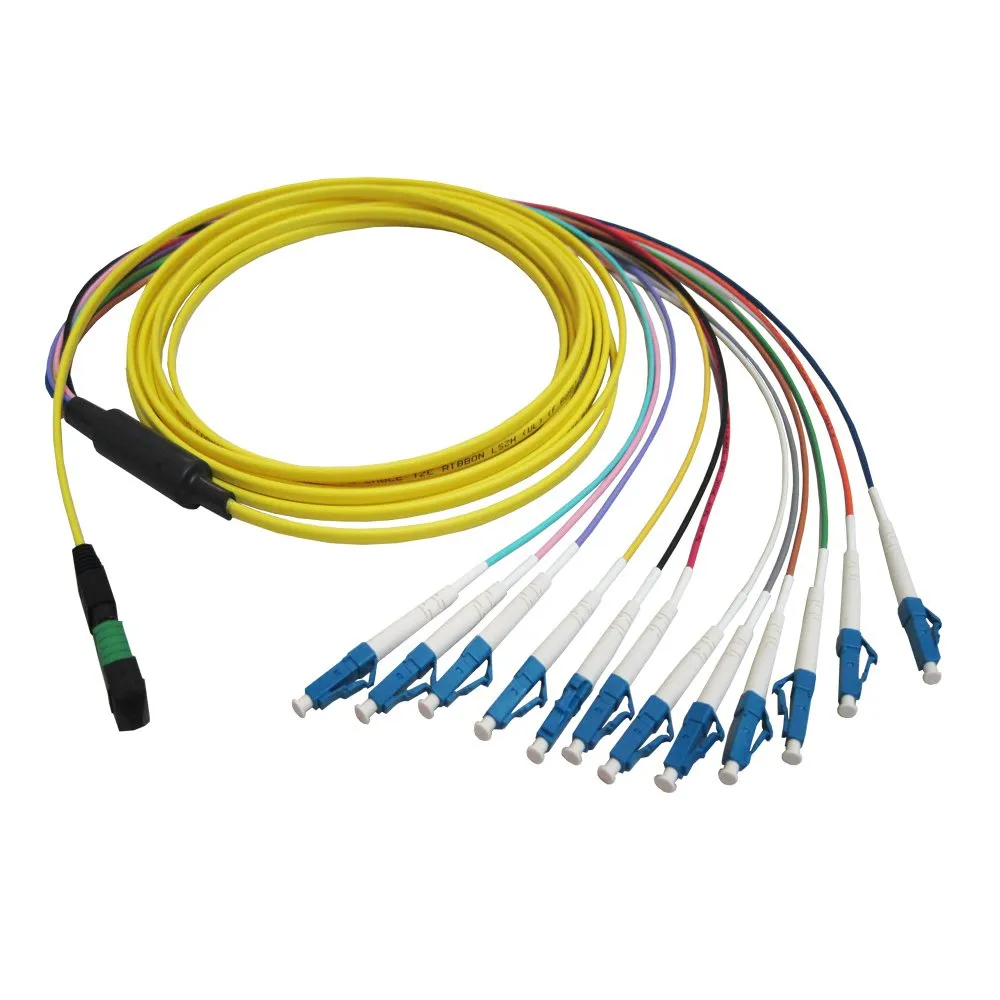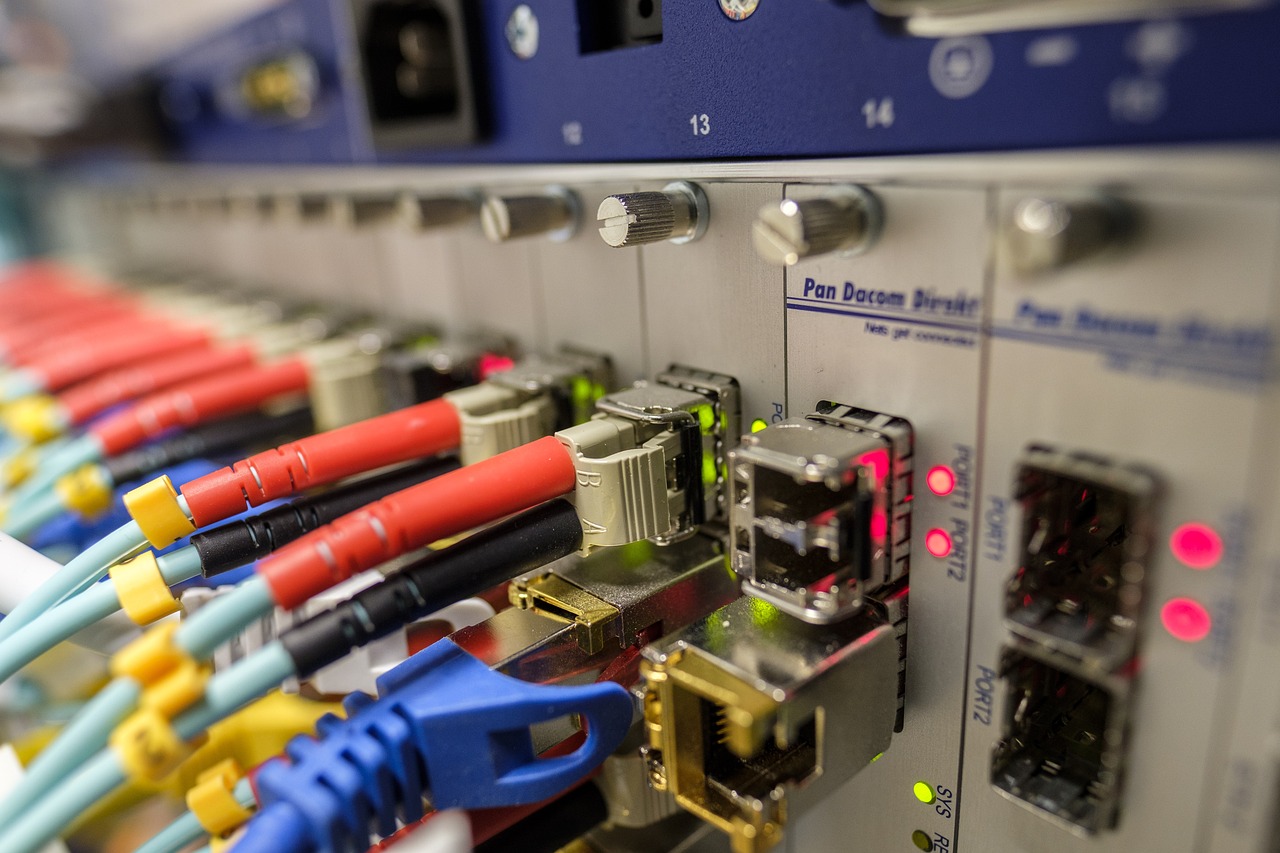Comparing 12 Cores Singlemode OS2 SMF28e MPO LC UPC Ribbon Fanout

Understanding Fiber Optic Trunk Cables
Fiber optic trunk cables play a crucial role in modern telecommunications, serving as the backbone for high-speed data transmission. These cables are designed to carry a large volume of data across long distances, making them essential for connecting network equipment in data centers, telecommunication rooms, and other high-density environments.
Singlemode fiber optic trunk cables are particularly well-suited for long-distance transmissions due to their ability to carry signals over greater distances with minimal loss. This makes them ideal for interconnecting facilities or linking remote sites together.
Another important aspect of fiber optic trunk cables is the use of LSZH (Low Smoke Zero Halogen) material. LSZH cables are specially designed to minimize the release of toxic fumes and smoke in the event of a fire, making them safer for indoor use and environmentally friendly.
Exploring Ribbon Fanout in Fiber Optic Cables
Understanding Ribbon Fanout Technology
Ribbon fanout is a crucial technology in fiber optic cables that facilitates the efficient distribution of fibers into individual connectors. Ribbon fanout works by organizing multiple fibers from a ribbon cable into separate strands, each terminated with its own connector. This allows for easier handling and connection of the individual fibers, streamlining installation and maintenance processes.
How Ribbon Fanout Works
In ribbon fanout technology, the ribbons containing multiple fibers are carefully separated and arranged into individual strands. Each strand is then precisely terminated with a connector, such as an MPO (Multi-fiber Push On) or SC/APC connector. This process ensures that each fiber within the ribbon can be efficiently connected to the corresponding port or equipment.
Advantages of Ribbon Fanout in Fiber Optic Systems
Ribbon fanout offers several advantages for fiber optic systems. Firstly, it simplifies the process of connecting multiple fibers by providing organized and pre-terminated strands. This reduces the likelihood of errors during installation and minimizes the time required for deployment and maintenance. Additionally, ribbon fanout promotes better cable management, as it enables neat and compact arrangements of fibers within equipment racks or enclosures.
Comparison of MPO LC UPC and SC/APC Ribbon Fanouts
When comparing MPO LC UPC and SC/APC ribbon fanouts, it's essential to consider their technical specifications as well as practical applications and use cases.
Technical Specifications
MPO LC UPC ribbon fanouts are designed to accommodate high-density connections with their multi-fiber interface. The MPO connector features a push-pull coupling mechanism that allows for quick and secure connections, making it suitable for applications requiring frequent mating cycles. On the other hand, SC/APC ribbon fanouts utilize a single fiber interface with an angled physical contact (APC) polish, which minimizes back reflections in systems where signal integrity is critical.
Practical Applications and Use Cases
The choice between MPO LC UPC and SC/APC ribbon fanouts depends on specific application requirements. MPO connectors are commonly used in data centers and high-speed telecommunications networks where rapid deployment and scalability are essential. Conversely, SC/APC connectors are favored in scenarios demanding superior signal performance, such as long-haul transmission systems and connections to sensitive optical equipment.
Comparing MPO LC UPC and SC/APC Connectors
When it comes to fiber optic connectors, both MPO LC UPC and SC/APC connectors play crucial roles in ensuring efficient and reliable optical signal transmission. Each type of connector offers unique design features and functionalities that cater to specific use cases within fiber optic systems.
MPO LC UPC Connectors in Detail
Design and Functionality
MPO (Multi-fiber Push On) LC UPC connectors are characterized by their high-density interface, allowing multiple fibers to be connected within a single connector. The design of MPO connectors facilitates quick and easy connections, making them ideal for applications requiring rapid deployment and scalability. These connectors feature a push-pull coupling mechanism, enabling secure mating cycles without compromising on connection integrity.
In addition, the LC (Lucent Connector) UPC (Ultra Physical Contact) polish ensures low insertion loss and back reflection, contributing to the overall performance of the fiber optic system. The precise alignment of fibers within the connector further enhances signal transmission efficiency, making MPO LC UPC connectors suitable for high-speed data centers and telecommunications networks.
Ideal Use Scenarios
MPO LC UPC connectors are well-suited for scenarios where space optimization and high port density are essential. Their ability to accommodate multiple fibers in a single interface makes them particularly advantageous in environments with limited rack space or when deploying large-scale fiber optic connections. These connectors are commonly utilized in data centers, enterprise networks, and cloud computing infrastructures where efficient cable management is paramount.
SC/APC Connectors in Focus
Connector Features
On the other hand, SC (Subscriber Connector)/APC (Angled Physical Contact) connectors are designed with a single fiber interface featuring an angled polish. This angled polish minimizes back reflections, making SC/APC connectors highly suitable for applications where signal integrity is critical. The precise angle at which the fiber end-face is polished reduces signal loss caused by reflections, ensuring optimal performance in demanding optical systems.
Furthermore, SC/APC connectors offer excellent stability and durability due to their ceramic ferrules, providing consistent performance over numerous mating cycles. The robust construction of these connectors makes them reliable choices for long-haul transmission systems and connections to sensitive optical equipment where maintaining signal quality is paramount.
When to Choose SC/APC
SC/APC connectors are preferred in scenarios that demand superior signal performance and reliability. Their ability to minimize back reflections makes them ideal for long-distance transmissions, high-power systems, and connections to equipment with sensitive receivers. Additionally, their compatibility with single-mode fibers makes them suitable for applications requiring precise control over light signals.
Making the Right Choice for Your Fiber Optic Needs
Factors to Consider When Selecting Fiber Optic Trunk Cables
When selecting fiber optic trunk cables, several factors should be taken into account to ensure optimal performance and compatibility with specific network requirements.
Transmission Distance: Consider the distance over which the fiber optic trunk cable will need to transmit data. For longer distances, Singlemode fiber optic trunk cables are the preferred choice due to their ability to carry signals over greater distances with minimal loss.
Environmental Safety: Evaluate the environmental conditions where the cables will be installed. If safety in indoor environments is a priority, opting for cables made of LSZH (Low Smoke Zero Halogen) material is crucial. LSZH cables minimize toxic fumes and smoke emissions in case of a fire, making them safer for indoor use.
Data Volume and Speed: Assess the volume of data that needs to be transmitted and the required speed of transmission. Fiber optic trunk cables with efficient ribbon fanout technology can streamline high-volume data transmission by organizing multiple fibers into individual connectors, ensuring seamless connectivity.
Future Scalability: Anticipate future expansion needs when choosing fiber optic trunk cables. Opting for cables that support scalable technologies such as MPO LC UPC or SC/APC ribbon fanouts ensures readiness for future network growth and upgrades.
Compatibility with Equipment: Ensure that the selected fiber optic trunk cables are compatible with existing network equipment and connectors, minimizing the need for additional adapters or modifications during installation.
Final Thoughts on Singlemode, Ribbon Fanout, and LSZH Cable Choices
In conclusion, when it comes to selecting fiber optic trunk cables, understanding the advantages of Singlemode fibers for long-distance transmissions, efficient organization through ribbon fanout technology, and safety considerations with LSZH cables is essential. By carefully considering these factors, network engineers and installers can make informed decisions that align with their specific application requirements while ensuring reliable and high-performance fiber optic connectivity.
See Also
Exploring the Top 12-Core Singlemode OS2 SMF28e MPO SC/APC Fiber Trunk Cable for High-Speed Data
Grasping the Key Attributes of 55mm Single Mode SC APC Fiber Optic Field Assembly Connector
Essential Specifications for 1:32 SC APC Fiber Optical Splitter with Pigtails
Premium Fiber Optic Patch Cables with LC/UPC Connectors for Singlemode Use


